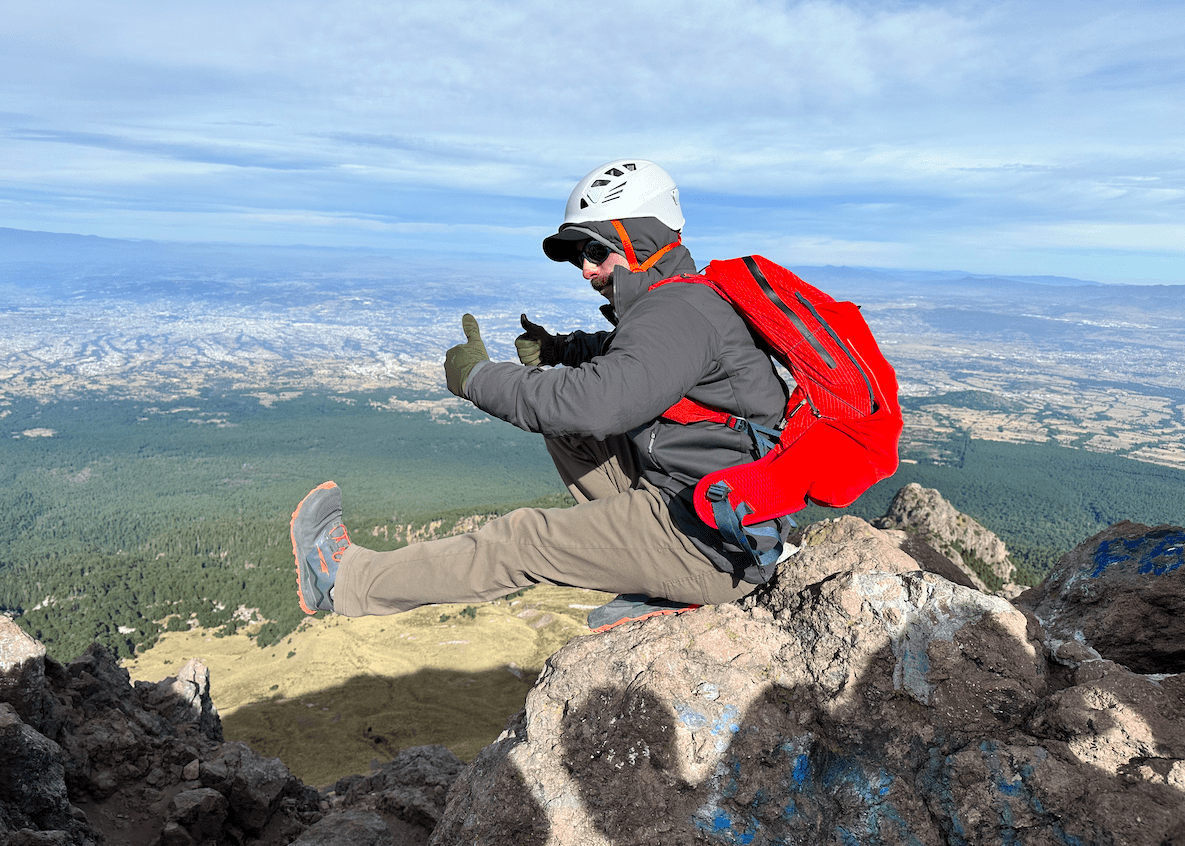With the advent of #vanlife and all of the sexy, young Instagrammers out there making us jealous of their wanderings and complete lack of financial responsibilities, it only seems appropriate that we look into ways we can approximate that lifestyle, even if only for a weekend. Buying a van is pretty much out of the question for most people. But, for those who want to buy a bit more comfort, structure, and safety than a normal backpacking tent provides, it may make sense to explore the latest rooftop tents to hit the market. Lucky for us, we got to borrow a Tepui Kukenam Sky for a few weekends to see if it’s worth the price of entry.
What is a Roof Top Tent?
Rooftop tents take a couple of forms. On one end of the market, there are the hard-case tents that look like extra-wide cargo boxes; on the other, the soft, folding tents, like the Tepui, that fold in half and sit under a waterproof tarp until it’s time to set up camp. Either way, a rooftop tent is a bed atop your car. Most will have a foam mattress of some sort to sleep on. They range in size from two-person to four-person or more.
Most rooftop tents have zip-up windows with mesh screens to keep bugs out. They’ll also have some canopy to protect you from the elements. Some, like the Kukenam Sky, let you remove the canopy and have skylights that let you sleep under the stars.
Rooftop tents are, for the most part, easy to set up. With a hard shell tent, the shell lifts up, either on a hinge or on struts, to give you access to the bed and some headroom. Soft tents unfold and use a hinged pole structure to give you headroom. Both styles will have an extendable ladder to give you access to the tent.

Why do People Buy Roof Top Tents?
It’s tough to track down the full history of these things, but it appears that modern roof top tents are an Australian creation. That makes sense, seeing as pretty much every plant and animal on that continent is designed to kill you in at least three ways, so it’s best not to sleep on the ground.
In a broader sense, rooftop tents work well in an expedition context. Because they’re vehicle-mounted, and not carried on your back, they can be made of sturdier materials than backpacking tents. They’re quick and pretty intuitive to set up and break down. If you’re driving to camp or driving between camps, rooftop tents make sense. They also make site selection a bit easier. You don’t have to worry about finding a place to set up your camping tent. The ground can be wet, sandy, muddy – whatever.
Rooftop tents also offer accessories that can make camping a more comfortable, luxurious experience. Annexes can act as bug-free changing rooms, living rooms, or porches. You can add an awning for sun protection. In fact, the rooftop tent can be an upstairs bedroom in what ends up being almost a canvas apartment on wheels.
Should you Buy One?
It all boils down to your needs and desires when it comes to camping. If rooftop tents were cheap, it would be a no-brainer to add one to your gear closet. Unfortunately, but understandably, rooftop tents are expensive. The cheapest ones start just under $1,000 and prices go well up from there. After accessorizing, you can easily drop $3,000 on a rooftop tent setup. At that price, #vanlife starts looking downright reasonable.
If you already have a backpacking tent that works for you and only head out car camping occasionally, a rooftop tent may not be worth the wallet damage. If you have outfitted your Land Cruiser with bumpers, sliders, and a rack and you actually take it places where other vehicles don’t or can’t go, a rooftop tent might be in your future. Somewhere in between? Try renting one for the weekend to see if you like comfort and convenience.
Tepui Kukenam Sky Review
If you’ve read all that and decided that a rooftop tent is right for you, the next question is, which one? The Tepui Kukenam Sky is a good tent for some people, though not all.
Features
Tepui’s Kukenam slots in on the lower end of rooftop tent pricing at around $1400. That’s still a chunk of change. It comes with some nice features to ease the pain in your wallet, though.
The tent body is made from a burly, 600d, 260g/sqm cotton/poly blend fabric with a solid DWR finish. That keeps the weather out by itself. Then, Tepui adds a 420d Polyester fly with a polyurethane coating to make the top completely waterproof. That fly is easily removable so you can take advantage of the huge, zip-open skylights on the tent ceiling. Along with the two doors and two windows, there is plenty of ventilation. All openings are covered with no-see-um mesh to keep the bugs out.
Tepui makes the hinged tent base out of aluminum with fiberglass insulation. It creates a sturdy foundation that keeps some of the cold out. On top of that, you have a 2.5″ memory foam mattress with a washable, cotton cover. The tent body is held up with 5/8″ aluminum tubing. And the entire tent, when stowed, gets a PVC-coated cover that zips on and seals out everything. The cover feels like river raft material.
Easy Setup
Setup is easy, even for someone who has never played with a rooftop tent before. Installation is also simple but requires a second set of hands and some patience. Tepui does not incorporate quick-release attachments, so you have to manually install eight bolts under the frame and cinch them down on your rack. It takes about 15-20 minutes once you get the tent up there. The second set of hands is useful because it’s slightly awkward to move 125 lbs of tent on and off of your roof rack solo.
Once it’s up there, setup is a piece of cake. You unzip the cover, extend the ladder, and use the ladder as a lever to unfold the tent. Each rung of the ladder locks in place as you extend it and has quick release buttons to collapse it down again. This makes adjusting the ladder length simple. As the tent unfolds, it is already set up inside. You don’t have to set up poles or attach the tent to the poles. Extend the window and door awnings with the included rods and you’re done. Total set up time, less than ten minutes.
Comfortable Sleep
Don’t get me wrong – sleeping pads for camping have come a long way in the last few years. But they can’t match up to the memory foam mattress in the Kukenam Sky. There are advantages to having everything bolted to the roof of your vehicle – weight doesn’t matter as much. Memory foam is heavy, but oh, so comfy. The Kukenam Sky’s footprint is 56″ x 96″, which is 16″ longer than a standard mattress and between a full and queen in width. So there’s plenty of room for two adults to stretch out. Three would be a squeeze, but you can do it if you’re really friendly.
Another advantage of a rooftop tent – bring your own pillow!
Overall Impressions
Tepui takes advantage of the rooftop tent format and uses burly materials to put together a solid tent. It provides a comfortable night’s sleep, is really easy to set up, and makes camping a breeze.
I noticed a 2-3 mpg decrease in gas mileage while the tent was on my car. That’s enough to make me want to take it off most of the time and install it only when it would be in use. It also makes me wish for quick-release installation.
If you think a rooftop tent is right for you, the Tepui Kukenam Sky could be a contender. It would be the right choice for someone with a large SUV who doesn’t care much for gas mileage. If you have a pickup with a bed rack that would place the tent out of the wind, all of my concerns don’t apply to you – feel free to whip out your wallet.
If, on the other hand, you’re on the fence about rooftop tents, or you have a smaller vehicle and gas mileage makes a difference, there are alternatives you may want to consider. Yakima’s SkyRise tents aren’t much lighter than the Kukenam, but they have locking, quick release attachments for your rack that make install and removal faster. Or, if the Kukenam Sky or some other tent really catches your attention, you can pick up a quick release kit from Front Runner Outfitters that should be compatible with most tents. The kit is not compatible with the standard roof rack locking cylinders, however.
The Kukenam Sky is available in regular and Ruggedized(!) versions. The ruggedized version adds diamond plate base, heavier fabric and frame, and some other features and costs $1950 to the regular $1400. You can also add an annex for $350 and purchase a sheet set for $135 to cover the funky mattress size.






Leave a Reply